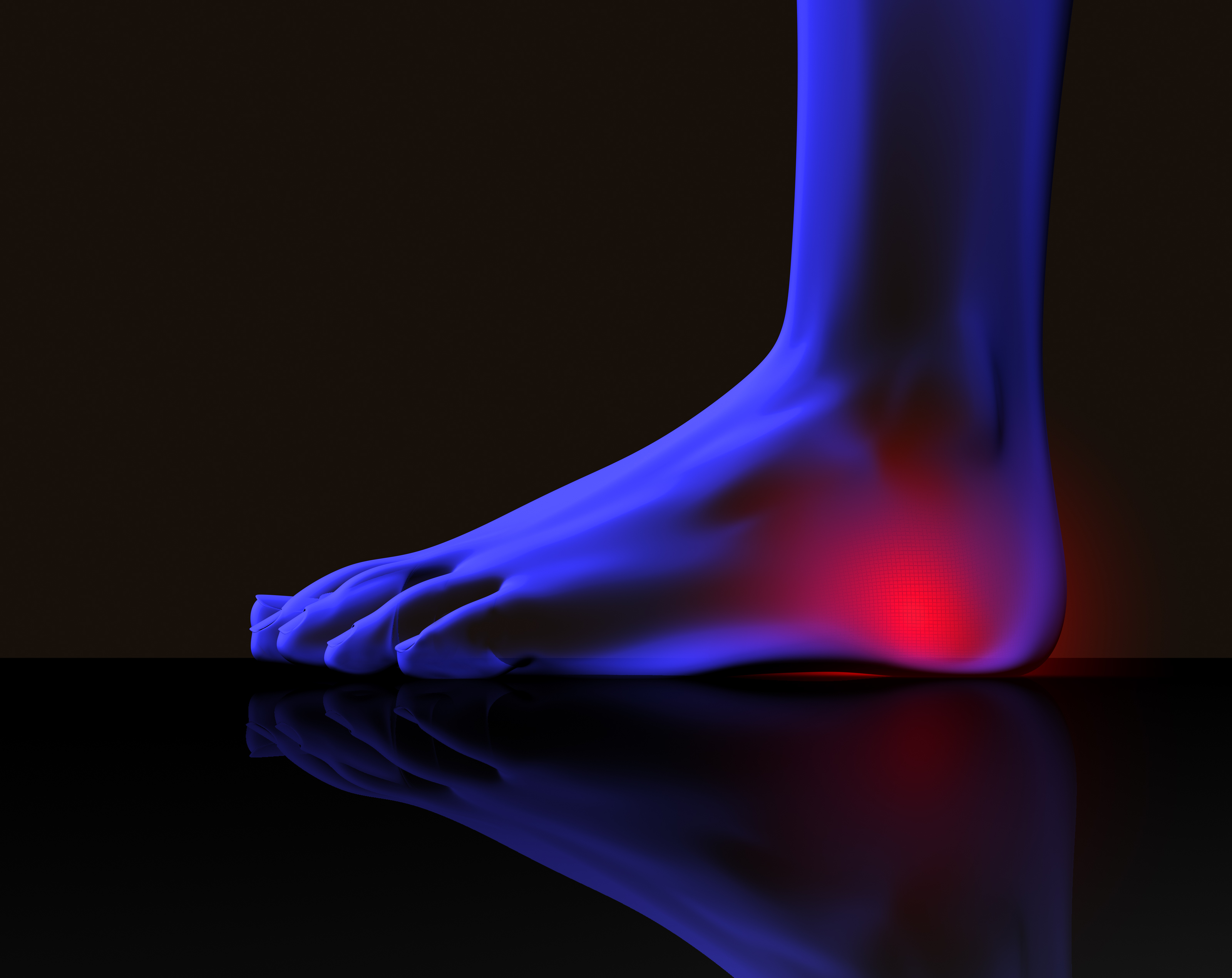The Most Common Causes of Heel Pain
by Dr. Rebecca Pruthi on Sep.13, 2014, under Uncategorized

Have you ever stepped out of bed with a painful soreness or ache on the bottom or back of the heel? During the walking cycle, the heels sustain tremendous amounts of force at impact. Over time, this can lead to excessive soreness and pain and may become disabling. See if your pain might be caused by one of these common sources.
Plantar Fasciitis or Heel Spurs
The plantar fascia is a thick, fibrous band of connective tissue that connects from the heel to the ball of the foot. It helps maintain the arch of the foot. This band may become strained and inflamed due to overuse or injury, which is commonly seen in athletes, those who walk in unsupportive shoes and those with recent weight gain, or with general overuse.
When the plantar fascia is strained and inflamed along the heel area, a spur may develop. This is a bony growth that may extend up to an inch and a half from the bottom of the heel. Heel spurs tend to occur in patients with prolonged bouts of plantar fasciitis. The heel spur itself may not be the original cause of pain but rather reflects irritation and inflammation of the fascia and, once present, helps perpetuate the pain.
Arch Height
Arch height can alter walking patterns. Excessive pronation may lead to strain on the bottom of the foot as it bears weight while walking. Pronation occurs when our feet “roll inward” during gait. Some amount of pronation is normal, but when there’s too much, overstretching of the ligaments and muscles attached to the heel bone occurs. This is a biomechanical problem usually found in patients with flat feet. Excessively high arches can also cause pain.
Stressful Impact
High impact on the heels or repetitive stress can result in soreness and pain. Standing in one place for too long especially over concrete or a hard surface may also cause pain because of the increased pressure on the heels. Obesity and pregnancy may contribute by increasing pressure on the heels. Additionally, the natural fat pad in our heels starts to atrophy as we age. Less padding means more pressure and potentially more pain. The pain also may be worse when wearing shoes without support or in those who suddenly increase their activity.
Achilles Tendonitis
The Achilles tendon is located in the back of the leg and attaches to the heel bone. As opposed to the above causes of pain, the heel pain of Achilles tendonitis occurs in the back of the heel instead of at the bottom. This is an overuse injury occurring commonly in athletes. It may also occur in people with tight calf muscles or those who overstress their muscles with sudden increases in activity. If left untreated, it may develop into a heel spur.
Arthritis, fractures or bursitis are additional but less common causes of heel pain. Fortunately, there are plenty of treatment options. If you suffer from chronic heel pain, talk to a podiatrist about your options for treatment and the best next step for resolving your pain.
